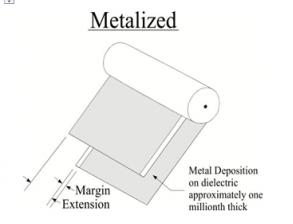A technical guide to capacitor

A technical guide to capacitor What is capacitor Capacitors are components that have the ability to store electrical energy. This energy is stored in an electrostatic field which is created by electrical charges accumulating on conducting plates placed across an electrical potential and separated by an insulating medium. Capacitance as a value is dependent upon the distance between the conducting plates, the dielectric constant of the insulating medium, and the common area of the conducting plates. The unit of capacitance is the FARAD A farad of capacitance is a LOT of capacitance. We generally deal in microfarads (mfd.) or nanofarad (nf) or picofarads (pf) Film Capacitors A film type capacitor made from this simple approach would create a large component. To prevent the waste of space the plates are “rolled” together, with an extra layer of dielectric to prevent the plates from touching, which results in a higher capacitance and smaller size. Film Capacitors come in
